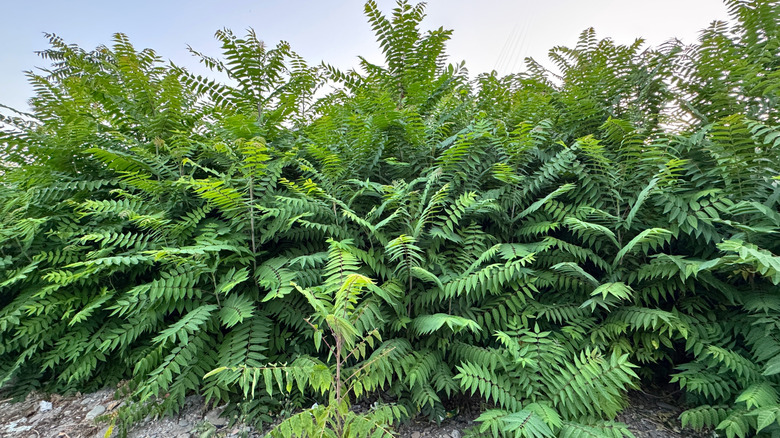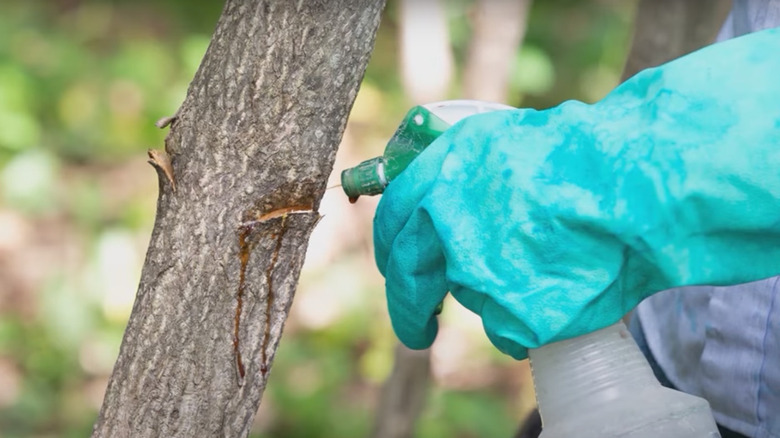How To Control The Tree Of Heaven In Your Yard & Prevent Spreading
Tree of Heaven (Ailanthus altissima) is a plant with so many strikes against it that it has largely struck out with gardeners. Who wants an invasive plant that smells bad (like burned or rancid peanut butter), has chemicals that affect other plants, can impact human health with its pollen and sap, and hosts the spotted lanternfly – an invasive pest you should always kill on sight. Headlines frequently note that this plant is the opposite of heavenly. Tree of heaven appears on noxious-weed lists for more than half a dozen states and is prohibited from being sold or distributed in Connecticut and Washington. Clearly, you'll want to think twice about planting a tree of heaven anywhere near your home, and if you already have it, you'll want to get rid of it. One of the methods for controlling and preventing the spread of this invader is to yank young seedlings from the ground. However, the most effective solution is an herbicide treatment, which will kill the roots.
Rapidly growing root suckers that the plant constantly sends up though the soil are partly responsible for tree of heaven's relentless spreading. New sprouts can also emerge from the soil up to 50 feet from the parent tree and may produce seeds within two years. If a tree of heaven plant is cut down without removing the root system, it will send out more roots and regrow. It also seeds prolifically, spreading up to 300,000 seeds annually. These seeds have wing-like structures, so they're easily dispersed by wind. The plant's size — up to 80 feet tall and 6 feet in diameter — and habit of colonizing disturbed ground make the spread seem even worse. While herbicides are usually a last resort, they are often a necessity for this plant and other invasive plants you should never grow.
Use herbicide to kill tree of heaven roots
As you might imagine, it's challenging to remove a tree that regrows when cut down to a stump, but the tree of heaven is easier to control when trunks are less that 8 inches in diameter. You can gain a modicum of control by yanking seedlings from the ground, but you must ensure the seedling's full root system is removed. This method only really works for new seedlings, not root suckers.
The roots of the mature plant are the real key to controlling tree of heaven, and these must be treated with an herbicide. After reading the label instructions, apply a systemic herbicide containing glyphosate or triclopyr in mid-to-late summer when the tree is engaged in photosynthesis and moving carbohydrates through its vascular system. That way, the herbicide will also be able to move through the system and into the roots.
Three methods are available for applying the herbicide. The foliar method, in which you are spraying the leaves, is most effective for smaller plants. For trees up to 6 inches in diameter, employ the basal bark method using a mix of triclopyr ester and basil oil. Apply the herbicide over the full diameter of the trunk from ground level up to 18 inches. The third method, hack and squirt, works on any trunk with a diameter of at least 1 inch. Make a cut evenly around the trunk with a hatchet for every inch in diameter and then squirt glyphosate or triclopyr herbicide into the cuts. Wait 30 days for the herbicide to take effect, then cut the tree and watch the area closely. You may need to re-treat for new growth. With persistence, you can get this unheavenly invader under control.

